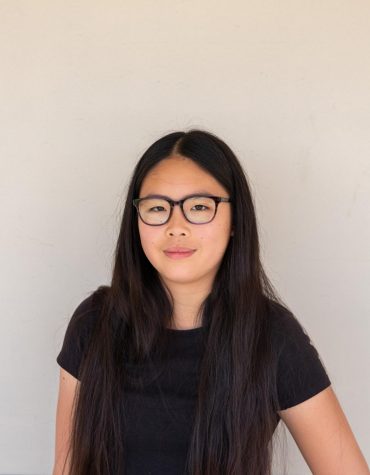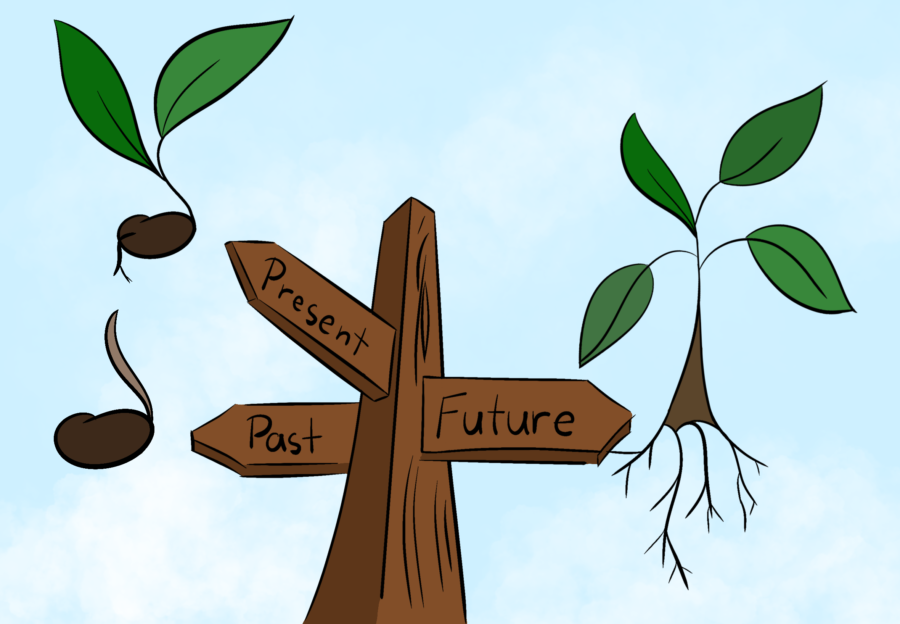Campolindo: Looking Back at the Past to Move Forward to the Future
While it is important to focus on the future, it is also important to realize the progress made from the past.
We’re always focusing on the future at Campolindo. How can we improve Campo for the better? How can we make it more oriented towards diversity, equity and inclusion? There are questions frequently asked by students, staff, and administrators. With this mindset, it can be easy to get lost focusing on the negatives. Campo is so big with so many parts and people attached to it, how could anyone make even a small difference? But if we take a moment to focus on the smaller parts that make up Campo, if we all look back on the past, we can all see that Campo and those who are a part of it have changed, for the better.
Our yearly musicals are a great example of this. This year’s Newsies production brought together the largest number of students who “audition[ed] and follow[ed] through with the show” in all of Choral Director Mark Robert’s years at Campo. “Something I’m super proud of is the diversity of kids that the musical brings together, whether that’s in the characters who are acting on the stage or [in] the pit and the tech [crew]. There’s close to 200 people that are involved in the show,” said Roberts. 200 different people, with different lives and with different talents all come together to put on one show. “Sometimes I simplify it [to]: What do people think of as your number one [activity]? Maybe your number one is lacrosse, or maybe your number one is basketball, or swim, or being academic, or this [or] that, and I feel really proud about the ability to bring [different] people together for an experience [that] is maybe [students’ number] four through nine in terms of their priority or the things that people would think of them as.”
Sports, the area of Campo that the majority students are a part of, have also experienced boosts of improvement not only in scoring and placement, but also in camaraderie and team morales. Some example teams are cheerleading and swimming.
Just four years ago, the Campo cheer program had only five cheerleaders on the sideline of football games and only nine competing at Nationals. There was very little mingling between the two teams as the competitive cheer team didn’t attend football games and the sideline cheer team didn’t compete. This year, however, the teams hit a high of 28 cheerleaders on Sideline and 23 cheerleaders on Comp. Along with this increase in athlete numbers, Sideline also went to their first competition ever and Comp entered their third year of cheering on the sideline of football games, allowing far more interaction between the two teams.
Head Captain of the Competitive Cheer team senior Emma Helber, who has been doing cheer since her freshman year, said, “There has been some substantial growth in the cheer program at Campo…This year alone, there’s been more people than there [were] in the entire program my first year…We’re seeing an increase in numbers as well as an increase in diversity.”
An example of this increase in diversity given by Helber was how “a lot of athletes [are] coming from all different age ranges [and]…there’s a nice balance between all [the grades].”
Cheerleaders this year have “a lot more experience [and also] a lot more different skill levels. [There are] more people who are a little bit more experienced with the sport and also it’s a place for people who are new to the sport to be introduced to it,” Helber added. “It’s crazy because my freshman year, there [were five] girls on the sideline. Now with both teams, there’s almost over 60 people standing there. So I think really, there’s just been a substantial growth point that I hope will continue to keep going.”
Campo’s Swim team has also experienced some changes over the years. Typically for swimmers, only swimsuits that fit the binary view of gender are offered for meets, which can exclude nonbinary students. However, more and more frequently over the years, students have been able to wear suits that are more comfortable for them and their bodies. One example student is freshman July Tringe, who wears a suit that affirms their gender. Tringe said, “In practice, we can wear whatever suits we want. So I found one that I feel comfortable being in. At meets, they do only offer a boys option and a girls option which aren’t very gender inclusive I feel like, but I am allowed to wear a suit that I feel more comfortable in which has shorts on the legs. I am allowed to do that, which I’m really grateful for. I’m not sure if that would have been possible years ago.”
Student comfortability is a key part of feeling accepted and safe in sports and other extracurriculars. Tringe added, “[A gender-affirming swimsuit] makes me a lot more comfortable. I probably would have quit swim if I couldn’t wear a swimsuit I’d be comfortable in.”.
Another big part of student involvement at Campo is in student-run clubs. This year Campo students created and continued over 110 clubs, covering topics including academics, affinity groups, athletics, hobbies, and more. Affinity groups in particular have seen an increase in membership this year and in student involvement, according to Commissioner of Student Affairs senior Bella Montero. “I think [affinity clubs] play a really important role on campus. I think people are starting to realize that you can join them if you’re a member of that specific affinity group or if you just want to be supportive of that affinity group. And I think people have started to realize that joining those clubs is a good idea,” she said.
Membership for affinity clubs has increased with this. “ACAC, [or] the Asian Culture Appreciation Club is one of the biggest clubs on campus. There’s definitely increasing participation in that club, as well as BSU [or Black Student Union], JSU [or Jewish Student Union], all of the affinity clubs, there’s definitely more members than I think people realize,” Montero said.
Leadership, our student representative body that puts on school-wide events, has also experienced a major change in terms of diversity over the years. The class doubled in size this school year after combining with the Leadership Equity Council, bringing in a larger pool of students and allowing leadership students to have an even greater impact on the community. Leadership Adviser Lindsay Webb-Peploe believes that the diversity in leadership can be attributed to “the work of students really working hard to make sure that it is [diverse]. Every group no matter what board they are on is supposed to think about how they can reach out to different groups of people over the course of the year, obviously. And so, for example, to give a tangible idea, I was interviewing somebody for one of our positions in the class, and I was asking them because it’s an interview question, ‘What is your commitment to diversity, equity, and inclusion?’ And they were like, ‘I’ve never not thought that leadership is about equity and inclusion and belonging,’ which was most definitely not a vibe here at Campo six or seven years ago. So I think that’s really out of student work.”
In addition to this, Leadership has also diversified the rallies over the years by trying to include every group on campus in them. “So when we first started having rallies six or seven years ago, it was always the same people who volunteered to be in the games. They weren’t in leadership. They didn’t necessarily represent sports or any group or club on campus. Now over the course of the year, if you look at it, we try to acknowledge fall sports, winter sports, spring sports, clubs, organizations such as publications, things like ACA Deca or Mock Trial that are really important parts of our campus, [and] diversity clubs. They’ve all been in the rally. And so the goal is not that every rally you’re going to see every different group of students but that over the course of the year, people see something that they’re involved in [or] somebody that they know, out there on the gym floor,” Webb-Peploe said.
Even The Claw staff itself has become larger and more diverse, which allows the content published within it to reach a greater audience. Third year Journalism Adviser Lauren Henson said, “In the first year, we became more diverse by changing our name. We went through a whole process and involved all of the students, going from La Puma to The Claw in order to be more culturally sensitive and to listen to different parties at school that had concerns about the previous title, as well as for us to be able to create our own new identity. And then additionally, we have an art staff, which I think brings in a whole new group of students that are able to participate in journalism. And we have a more diverse group. I think that our 28 students better reflect the campus as a whole than in previous years.”
Campolindo has come a long way if we compare our current school to the past. There’s so much that has been accomplished in so many different areas. Even with this, there’s always more to improve upon. We’ve made great progress here at Campo in terms of diversity, equity and inclusion, and we still have a ways to go, which is okay. Change takes time, and with the effort of everyone, we all can make it come a little bit faster.
Your donation will support the student journalists of Campolindo High School's The Claw. Your contribution will allow us to produce more issues and cover our annual website hosting costs.

Senior Maggie Doolittle has been a Girl Scout since kindergarten, racking up a total of 11 years in her troop. "I have continued [Girl Scouts] because...

(she/her)
Senior Lily Qin has always been creative. From a young age, she was involved in various creative pursuits such as ballet and music, and now,...




